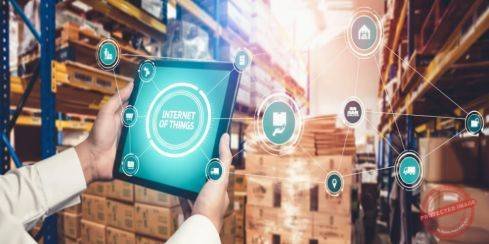How AI, IoT, and Robotics Are Creating Self-Learning, Self-Healing Supply Networks That Operate at Machine Speed.
The Evolution of Automation
Supply chain automation has evolved from simple process efficiency into a new paradigm of autonomous intelligence. What began with barcode scanners and conveyor belts has now matured into self-orchestrating ecosystems—where machines, sensors, and algorithms collaborate seamlessly without human intervention.
This next generation of logistics is defined by the autonomous supply chain—a system capable of perceiving, predicting, and adapting in real time.
Fueled by Artificial Intelligence (AI), the Internet of Things (IoT), and robotics, autonomous supply chains mark the shift from human-managed processes to self-optimizing digital organisms that continuously improve themselves.
Defining the Autonomous Supply Chain
An autonomous supply chain is more than automated workflows—it is a cognitive ecosystem that integrates real-time data, predictive analytics, and machine learning across every link of the value chain.
Its defining characteristics include:
-
Real-Time Sensing: Continuous monitoring of demand, inventory, and environmental conditions.
-
Predictive Intelligence: AI algorithms forecast disruptions, delays, and demand fluctuations.
-
Dynamic Decision-Making: Systems reroute shipments, rebalance stock, and adjust production autonomously.
-
Closed-Loop Optimization: Feedback from IoT sensors refines future performance automatically.
This model mirrors biological systems—self-healing, adaptive, and resilient by design.
The Role of AI and Machine Learning
Artificial Intelligence serves as the brain of the autonomous supply chain. Machine learning algorithms analyze vast datasets to identify inefficiencies, predict disruptions, and optimize operations in real time.
Key applications include:
-
Autonomous Demand Planning: AI models forecast consumer behavior using multi-source data streams.
-
Intelligent Procurement: Systems evaluate supplier performance and automatically switch to alternate sources when risk arises.
-
Dynamic Routing: AI directs logistics based on live traffic, weather, and port conditions.
-
Self-Healing Networks: Predictive maintenance systems detect and resolve equipment issues before they escalate.
Together, these capabilities reduce downtime, minimize human error, and create self-correcting networks capable of continuous learning.
IoT and Robotics: The Hands and Eyes of Autonomy
While AI provides the intelligence, IoT devices and robotics serve as the operational backbone of autonomy.
-
IoT Sensors feed real-time data on location, temperature, and equipment status.
-
Autonomous Mobile Robots (AMRs) move goods efficiently through warehouses.
-
Drone Fleets perform inventory scanning and last-mile deliveries.
-
Collaborative Robots (Cobots) assist human workers in high-precision tasks.
This convergence of smart machines and connected infrastructure enables 24/7 operations that are faster, safer, and more scalable than ever before.
Blockchain and Transparency in Autonomous Operations
As supply chains become machine-driven, trust and transparency must be guaranteed at every level. Blockchain provides an immutable record of each transaction and decision made by autonomous systems.
This ensures auditability and accountability—a critical factor as machines begin to execute procurement contracts, release payments, and manage logistics independently.
Blockchain integration also facilitates machine-to-machine trust, enabling autonomous systems from different organizations to collaborate securely without centralized oversight.
The Human Role in an Autonomous Future
Contrary to popular belief, autonomy doesn’t eliminate human workers—it elevates them. As machines handle repetitive and reactive tasks, humans focus on strategic oversight, ethical governance, and innovation.
Tomorrow’s supply chain workforce will be “digital conductors”, guiding autonomous systems, interpreting data insights, and designing smarter algorithms.
Reskilling and cross-functional training will be essential to ensure that human expertise complements—not competes with—machine intelligence.
Challenges and Ethical Considerations
Building fully autonomous supply chains is not without challenges:
-
System Interoperability: Integrating legacy systems and emerging platforms.
-
Data Governance: Ensuring data integrity and regulatory compliance.
-
Cybersecurity: Protecting autonomous systems from manipulation or tampering.
-
Ethical AI Oversight: Ensuring transparency, fairness, and accountability in algorithmic decision-making.
To address these, organizations are adopting AI governance frameworks and ethical design standards that prioritize human oversight and explainability in machine-led environments.
The Road to Full Autonomy
Autonomous supply chains are developing in stages:
-
Digitized: Systems are connected and data is centralized.
-
Automated: Processes execute based on rules and triggers.
-
Predictive: AI forecasts and preempts disruptions.
-
Adaptive: Systems learn and optimize continuously.
-
Autonomous: Supply chains self-manage from end to end.
Industry leaders like Amazon, Siemens, and DHL are already operating at the predictive and adaptive stages—laying the groundwork for fully autonomous logistics ecosystems within the decade.
Closing Thoughts and Looking Forward
The autonomous supply chain represents the pinnacle of digital transformation. By integrating AI, IoT, robotics, and blockchain, organizations are building living, learning networks that can anticipate challenges, optimize performance, and self-correct in real time.
This is not just evolution—it’s a revolution in how global commerce operates.
In the near future, the most successful supply chains won’t just move goods; they’ll move intelligently, powered by a continuous feedback loop of data, decisions, and discovery.
Autonomy isn’t the end of human control—it’s the beginning of human-augmented intelligence on a global scale.
References
-
“The Autonomous Supply Chain: A New Era of Logistics Intelligence” – Gartner Insights
https://www.gartner.com/en/articles/the-autonomous-supply-chain-a-new-era-of-logistics-intelligence -
“AI and Robotics in Supply Chain Automation” – McKinsey & Company
https://www.mckinsey.com/capabilities/operations/our-insights/ai-and-robotics-in-supply-chain-automation -
“Building Self-Healing Supply Networks” – Deloitte Insights
https://www.deloitte.com/insights/building-self-healing-supply-networks -
“Blockchain for Autonomous Logistics Systems” – MIT Technology Review
https://www.technologyreview.com/2025/01/17/blockchain-for-autonomous-logistics-systems -
“The Future Workforce: Humans and Machines in Harmony” – Harvard Business Review
https://hbr.org/2024/11/the-future-workforce-humans-and-machines-in-harmony
Author: Serge Boudreaux – AI Hardware Technologies, Montreal, Quebec
Co-Editor: Peter Jonathan Wilcheck – Miami, Florida
Post Disclaimer
The information provided in our posts or blogs are for educational and informative purposes only. We do not guarantee the accuracy, completeness or suitability of the information. We do not provide financial or investment advice. Readers should always seek professional advice before making any financial or investment decisions based on the information provided in our content. We will not be held responsible for any losses, damages or consequences that may arise from relying on the information provided in our content.



